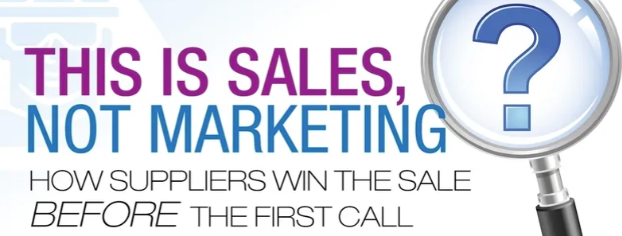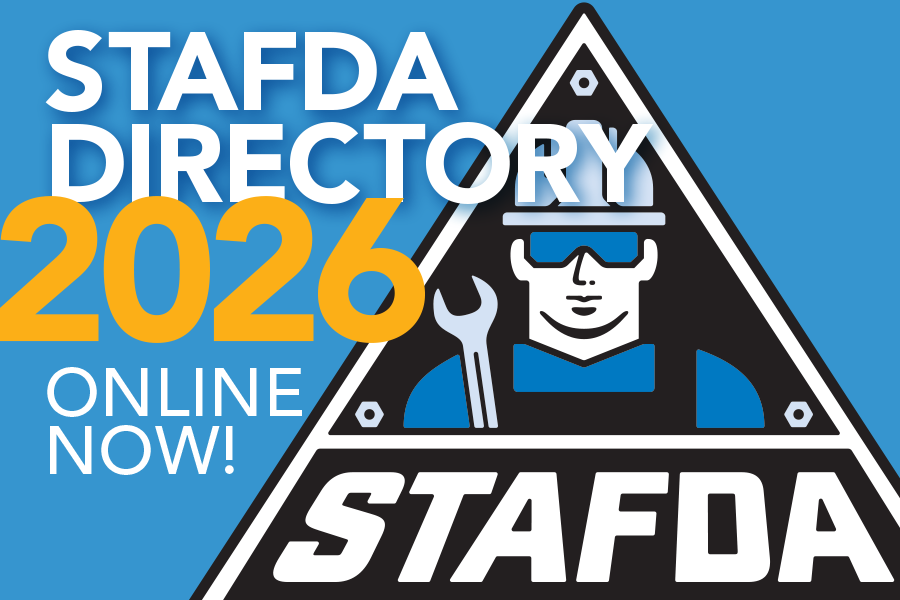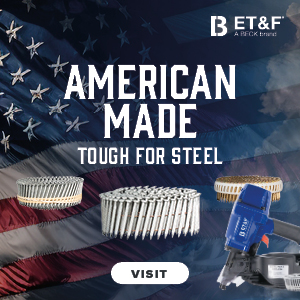 |
 |
The way contractors choose suppliers has changed quietly—but drastically. The phones are quieter. Fewer early conversations. More quote requests focused on price. The problem isn’t your team; it’s how buyers are buying now.
By the time buyers reach out, they’ve often already decided who they’ll call, what they’ll ask for, and what they expect to pay. Suppliers who understand this shift are getting shortlisted and closing deals before their competitors even know there’s a buyer in the market.
This isn’t about your sales team’s performance. It’s about what happens before sales ever gets involved.
THE SHIFT NOBODY’S TALKING ABOUT
Ten years ago, when buyers needed a product, they called three suppliers for quotes. Today, buyers do most of their research long before your sales team even knows they’re in the market. They’re researching online—comparing options, reading reviews, and scanning directories.
Now, AI is speeding things up. Buyers ask tools like ChatGPT or Google’s AI-powered search for supplier recommendations, often without clicking to a single website.
If your company isn’t providing clear, trusted information in the right format, you may not even show up—no matter how good you are.
If you’re not answering their questions online, you’re not even in the running.
To earn the first call, start by answering these five questions.
 |
THE FIVE QUESTIONS
Marcus Sheridan, author of They Ask, You Answer and Endless Customers, identified five questions that drive most buying decisions. He calls them the “Big 5,” and they apply perfectly to our industry:
1. Cost and Pricing
Not necessarily your exact prices, but how you price.
What drives cost. What to budget for. A contractor pricing out a compact loader wants to know if they’re looking at a $5,000 or $15,000 investment before they reach out. Give them ranges and budget drivers.
2. Problems Your Products Solve
Buyers don’t search for product names first. They search for solutions to problems. They’re typing in things like: “How to reduce concrete curing time in cold weather” or “Best fasteners for coastal construction.” If your site doesn’t address those problems, you won’t even make the shortlist.
3. Comparisons
Aluminum vs. steel scaffolding. Pneumatic vs. cordless tools. Buyers are comparing options whether you help them or not. The supplier who clearly explains trade-offs, even when a competitor’s option might be better, builds trust. And trust gets you chosen.
4. Reviews and Proof
Buyers don’t just want claims—they want proof. Not just testimonials on your homepage. Real projects. Real results. Real customer experiences. Show a photo of your core drill in use on a jobsite downtown. Share a short story about how a contractor saved two days thanks to same-day delivery on rotary hammers. A quick video of your products in action beats any five-star review.
Proof drives confidence. Confidence drives sales.
5. “Best Of” Recommendations
Buyers don’t just want options—they want answers They’re not asking, “What lasers do you carry?” They’re asking, “What’s the best rotary laser for slab layout?” or “Which compact generator is best for residential remodels?” When you give clear, job-specific recommendations, you build trust and make it easier for buyers to choose you before ever picking up the phone.
SHOW YOUR ANSWERS
If buyers can’t find your answers, they won’t help you win. Forget content calendars. Just put answers where buyers are already looking.
Start with your product pages. Specs and PDFs aren’t enough. Add a section that answers the most common buyer questions, like typical lead times or what to know before ordering.
Resurrect your FAQ page. If you have one, it’s probably buried in the footer. Move it up. Better yet, put relevant questions right on pages where buyers are already comparing products.
Don’t forget your online profiles. Your Google Business listing or industrial directory page is often the first thing buyers see, not your website. Most suppliers treat these like digital Yellow Pages. Use that space to answer real buyer questions. Even a short paragraph makes the difference.
Sweat the small stuff. Your catalog, email signature, and product sell sheets are untapped gold mines. Add a one-page FAQ to the front of your catalog. Link to your “Top Buyer Questions Answered” page in your email signature. Small changes that win sales before the first call.
Because here’s the truth: If they find better answers from someone else, that’s who they’ll trust and call.
START WITH THE QUESTIONS
Let’s be clear about what we’re doing here. This isn’t about publishing a few blog posts. It’s about removing friction from your sales process.
When buyers can’t find info from you, your competitor becomes the expert.
When you answer buyer questions clearly and early in their research, you’re not replacing your sales team—you’re making them more effective. By the time customers call, they already know what they want, and they trust you to deliver.
Your sales team spends less time answering basic questions and more time solving real problems.
Less time chasing cold leads and more time closing warm ones.
Ask your sales team: What questions do you hear every week?
Pick one product category or service area. Gather the 5–10 most common buyer questions. Write clear answers and post them where buyers actually look—on product pages, in directories, in your Google Business Profile
One distributor we worked with added a simple FAQ section to a high-value product page. Within three months, they were fielding better-qualified leads and spending far less time on tire-kickers.
Think about the last job your competitor won. The buyer never called you—but someone got the quote.
What question could you have answered online that might have put you on their shortlist?
In today's market, the sale is often won or lost before your sales team even knows there's an opportunity.
The suppliers who recognize this aren't waiting for buyers to come to them with questions. They're answering them early, clearly, and exactly where buyers are already looking. They earn trust before the first call.
The suppliers who win before the first call donft just get seen, they get chosen.
Bob DeStefano is president of SVM Industrial Marketing and STAFDA's Online Marketing Consultant. The author of STAFDA's Online Marketing Strategies 2.0 manual, Bob is a B2B marketing strategist with 30 years of experience helping industrial companies grow leads, sales, and profits online. Contact Bob at (877) 786.3249 ext.234, bdestefano@svmsolutions.com, or visit svmsolutions.DeSTEFANO com.
This article originally appeared in the October/November 2025 issue of Contractor Supply magazine. Copyright 2025, Direct Business Media.
















